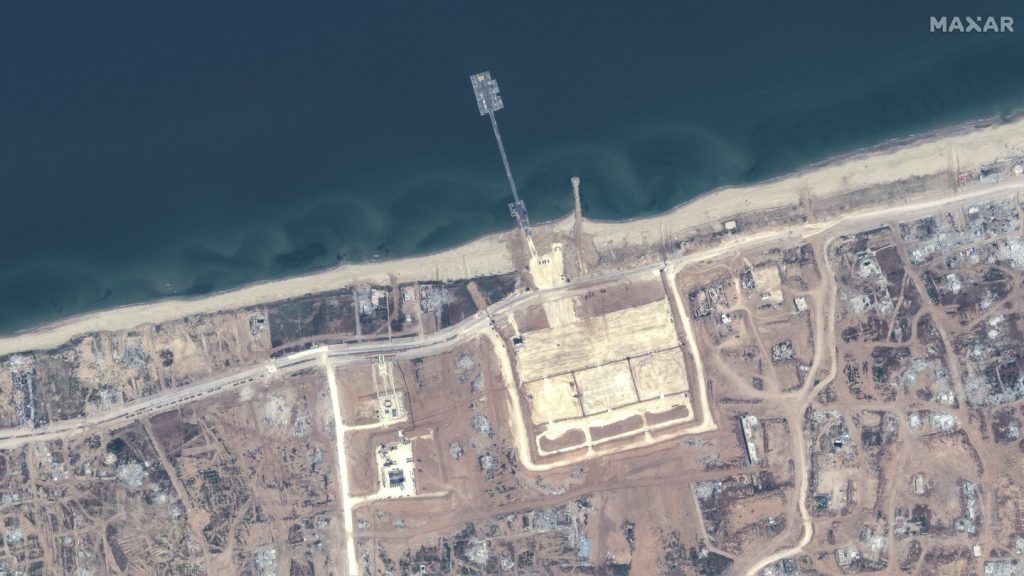The United Nations World Food Program has recently distributed a limited number of high-energy biscuits in Gaza that arrived via a new humanitarian sea route. These biscuits were part of the first aid shipments unloaded from a U.S.-built pier and have reached Palestinians in desperate need. Despite the aid flow, American officials acknowledge that it is not happening at the desired rate. The goal is for the pier to deliver the equivalent of 150 truckloads of aid to Gaza daily, which is only a fraction of the 600 truckloads needed to address the humanitarian crisis caused by the Israel-Hamas conflict.
Israeli restrictions on land crossings and increased fighting have severely limited food and fuel deliveries to Gaza, pushing the region to the brink of famine. The recent takeover of the Rafah border crossing by Israel has further complicated aid operations in Gaza, leading to a near-collapse of humanitarian efforts, according to the United Nations and relief groups. All 2.3 million residents of Gaza are facing food shortages, with famine already declared in north Gaza. The U.S. pier project has faced challenges, including a chaotic incident where a man was shot dead while attempting to retrieve aid supplies. This disruption forced a temporary suspension of aid convoys from the pier.
The World Food Program has warned that the success of the U.S. project hinges on cooperation from Israeli authorities, allowing for alternate land routes and better security measures. While the sea route is not meant to replace land crossings, it is crucial for ensuring a steady flow of aid into Gaza. However, Israel has cited logistical challenges and manpower gaps among aid groups as reasons for delays in aid delivery. Despite Israel’s claims of no restrictions on the number of trucks entering Gaza, humanitarian officials stress the need for smoother logistics and safer conditions for aid workers.
The U.S. Agency for International Development has confirmed that 41 trucks loaded with aid from the new pier have reached humanitarian organizations in Gaza. The goal is to continue increasing aid deliveries to meet the urgent needs of the Palestinian population. Humanitarian organizations, along with the U.S., continue to urge Israel to facilitate the movement of aid vehicles through entry points and ensure the safety of aid workers. As the crisis in Gaza intensifies, international cooperation and support are vital in addressing the pressing humanitarian needs of the population. Efforts are ongoing to improve aid distribution and prevent further escalation of the crisis.


